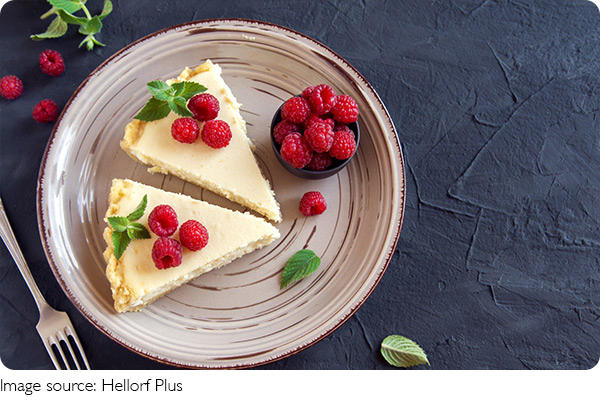Cheese Lovers Delight

As cheese lovers, we know that there's no shortage of amazing cheese varieties to enjoy in both savory and sweet dishes. When it comes to desserts, cheese can elevate even the simplest recipe into a luxurious treat.
Whether you're a seasoned chef or just starting to experiment in the kitchen, this guide will walk you through the differences between various cheeses commonly used in desserts and how to pair them to create the ultimate cheese-based sweets. Let's dive in!
Why Cheese in Desserts?
We often associate cheese with savory dishes, but it has a long history of being used in sweet creations. The creaminess, tanginess, and richness of certain cheeses complement the sweetness of cakes, tarts, and ice creams, creating a harmonious balance of flavors. But not all cheeses are created equal. Each type has its own unique flavor profile, texture, and suitability for different desserts. Here's where we'll break down the most popular cheeses for dessert and discuss which ones work best with certain flavor profiles.
Cream Cheese: The Cheesecake Staple
One of the most beloved cheeses in the world of dessert is undoubtedly cream cheese. Cream cheese is rich, tangy, and smooth, making it a perfect base for many desserts. Cheesecake, the quintessential cream cheese dessert, is a fan favorite. The creamy texture of cream cheese blends seamlessly with sugar and eggs, creating a rich, velvety filling for your favorite cheesecake recipes. Cream cheese also works wonderfully in frostings for cakes, cinnamon rolls, or as a dip for fruits like strawberries. For the best pairing, think of fruits like berries, citrus, and even chocolate.
Mascarpone: The Velvet Touch
Another popular cheese in the dessert world is mascarpone, a soft Italian cheese often used in tiramisu. Mascarpone has a smooth, slightly sweet flavor and a creamy texture that makes it perfect for indulgent desserts. It's commonly used in layered desserts like tiramisu, where it pairs with coffee and cocoa to create a rich, yet delicate flavor. You can also use mascarpone in mousses, custards, or to top fresh fruit tarts. Pair mascarpone with flavors like vanilla, citrus, and coffee for a well-rounded dessert experience.
Ricotta: Light and Luscious
For a lighter, fluffier cheese, ricotta is the way to go. Known for its mild and slightly grainy texture, ricotta works well in both savory and sweet dishes. When it comes to desserts, it's often used in cheesecakes, cannoli fillings, or as a topping for pancakes and waffles. Ricotta is a wonderful choice for anyone looking for a light yet creamy cheese that won't overpower the sweetness of a dessert. Pair ricotta with lemon zest, honey, or fresh berries for a bright, refreshing dessert experience.
Blue Cheese: Bold and Unexpected
Blue cheese may seem like an unusual choice for desserts, but its strong, tangy flavor adds a surprising depth to certain sweets. If you're feeling adventurous, try pairing blue cheese with pears, figs, or honey in a tart or salad. The sharpness of the blue cheese balances out the sweetness of the fruit, creating a sophisticated dessert that's sure to impress. For a more refined pairing, consider using blue cheese in a cheesecake or in a mousse with caramelized nuts.
Conclusion: Cheese, the Dessert Game-Changer
Cheese in desserts is a trend that's here to stay, offering endless opportunities for creativity and indulgence. Whether you're using the tangy richness of cream cheese or the smoothness of mascarpone, there's a cheese out there for every dessert lover. So, the next time you're baking or preparing a sweet treat, consider adding a little cheese into the mix. You might just discover your new favorite dessert combination!

We hope this guide has inspired you to experiment with different cheeses in your own kitchen. What's your favorite cheese-based dessert? Let us know, and happy baking!

 · Cate team
· Cate team